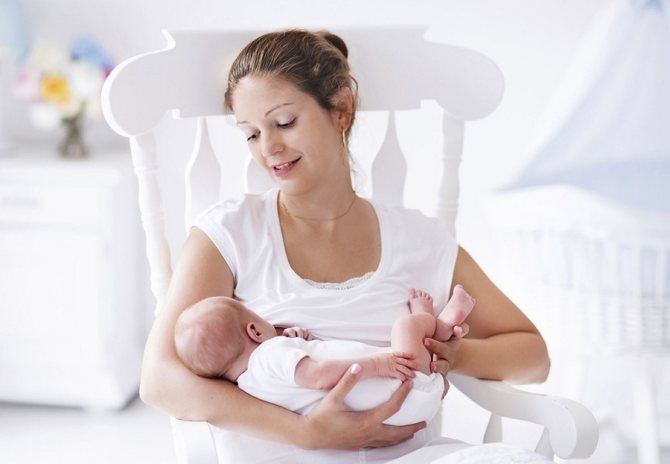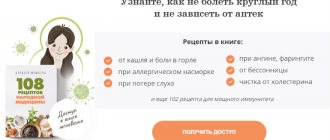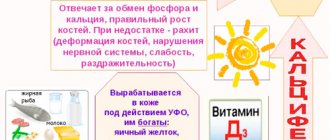What is heat rash in infants?
Miliaria is a reaction of a baby’s skin to high temperature. When he gets hot, he starts to sweat a lot. The rate of evaporation of liquid from the surface of the skin is very low. The sweat glands do not work perfectly, so irritation occurs. It is noticeable precisely in those places that are difficult to ventilate:
- In various folds on the body and hard-to-reach places: armpits, neck, behind the ears;
- Under the diaper, in the buttock folds, groin area, on the lower back;
- On the bends, elbows and knees.
Miliaria is caused by uncomfortable conditions when the baby is wrapped up and the windows are kept closed. Therefore, most often it appears in the summer, when young parents are afraid of any draft, but the comfortable temperature for a child is 18-20 degrees. He desperately needs fresh air, like any adult. The same applies to regular wet cleaning.
Note! Miliaria can appear during an illness in the infant, accompanied by an increase in body temperature. Sweat does not have time to evaporate from the surface of the skin, which causes redness.
Miliaria and its symptoms
In order to know how to distinguish prickly heat, you need to have the following information about it.
Rashes with it are of the following type:
- with crystalline white bubbles that occur mainly in newborn babies in the first two weeks of life on the face and neck. The rash in this case is small.
- a red spot, and in the center of this spot medium blistering rashes appear. In this case, the rash covers the groin, armpits and neck area.
- prickly heat, which is called deep heat. With it, the rash is skin-colored and appears from severe sweating on the skin of the legs and arms.
It occurs in children from overheating the air in the apartment and from tightly wrapping the baby. To avoid rashes associated with the problem of overheating in babies, you must adhere to the following rules:
- ventilate the room frequently;
- have a normal temperature in the room and prevent the child from sweating.
Having determined that your child has heat rash or an allergy, you can begin the following types of treatment for it.
What is an allergy in a baby?
How to distinguish vomiting from regurgitation in a baby - characteristic signs
Allergies in infants are provoked by certain factors:
- food;
- cosmetics;
- animal hair;
- medicines;
- plant pollen;
- harmful toxic substances.
It does not appear immediately, but after a certain time after the action of the undesirable factor. The interval between contact with the irritant and the appearance of the first symptoms can be 2-3 days or last for a couple of weeks.
Allergies require treatment and elimination of the cause of its occurrence. It is not always easy to understand what exactly caused a painful skin reaction. Therefore, it is important not to introduce several foods into the baby’s diet at once, and to use only proven baby care products. Be sure to observe his reaction after visiting new places.
Why is it important to make a correct diagnosis?
Many mothers wonder: heat rash or allergies - how to tell the difference? Why is this needed? While prickly heat is a fairly harmless skin rash that can be easily treated with normal hygiene procedures, an allergic rash can develop into dermatitis, eczema or more serious skin diseases. Therefore, it is necessary to consult a pediatrician or dermatologist to prescribe the appropriate treatment. It is very important to understand in time: the baby has heat rash or allergies. A doctor can tell your mother how to distinguish these diseases. With an allergic rash, the child suffers from itching, and without eliminating the cause of its appearance, his condition will only worsen.
Differences between allergies and prickly heat
Allergy to buckwheat in infants up to one year old
When a child first develops a rash, parents are at a loss as to what it could be: prickly heat or an allergy. Such diagnoses are usually given to babies under one year old, not counting viral diseases. Therefore, it is important to know how to distinguish heat rash from allergies in an infant in order to determine treatment tactics.

Rash
Note! Miliaria usually does not require treatment and goes away on its own. The main thing is to normalize indoor conditions and dress the child based on the temperature at home and outside.
If spots appear on the baby's skin, you need to undress him and leave him for a while. If you have heat rash on your body, then air baths will quickly get rid of it. The spots will lighten and become less noticeable and will gradually disappear.
Most often, prickly heat does not cause any discomfort. The spots do not itch or itch, which cannot be said about an allergic reaction. In the latter case, the blisters grow and become covered with a crust that is rough to the touch. They bother the baby, he can scratch the inflamed areas until it bleeds. In this case, the baby’s condition worsens:
- Becomes whiny, restless;
- The temperature may rise;
- Running nose, coughing and sneezing often occur;
- Sometimes accompanied by stool disorder.
Note! With prickly heat, intoxication of the body does not occur. There are no changes in the baby's behavior.
You can suspect the presence of an allergy if something new has happened in the child’s life over the past week or two:
- Replacing the mixture;
- The appearance of new products on the menu;
- Buying bed linen or other laundry detergent;
- A walk in a park with flowering trees or meeting pets;
- Consumption of unwanted foods by the mother if the baby is breastfed.
Allergies appear not only in folds and folds. It occurs on exposed areas of the skin, on the cheeks, stomach or back. This is one of the main differences worth paying attention to. Allergies can also be observed on mucous membranes. So spread in the area of the nasopharynx and throat can provoke Quincke's edema. Therefore, it is important not to self-medicate, but if you suspect an allergy, contact your pediatrician. If necessary, he will refer you to a specialist for additional advice. Miliaria is a skin reaction and never forms on the mucous membrane.
Allergy spots are more pronounced, usually bright red and have a larger diameter. With prickly heat, they are small, like dots, capable of merging, in which case they appear more voluminous. Their boundaries are always easy to distinguish upon careful examination.

Allergy
Causes of prickly heat
This is the most common phenomenon in children. Parents try to wrap their child warmer, fearing that he will freeze. But in children, the sweat glands are still imperfect, and overheating is often more unfavorable for them than hypothermia. Babies have such a peculiarity that when the ambient temperature rises and air access to the skin is blocked, the sweat glands do not work properly. Because of this, a rash appears in areas where sweat accumulates. These small reddish pimples do not cause problems for the baby at first, but if the disease gets worse, they begin to become inflamed, spread throughout the body and itch. First, they appear in places where sweat glands accumulate: under the armpits, in skin folds, on the buttocks. But in advanced cases, the rash even appears on the face, which is very rare. It is believed that every baby has heat rash. But if you properly care for his skin, you can significantly reduce its manifestations. Therefore, it is so important to know how to distinguish heat rash from allergies in a child.

Types of infant heat rash
If your baby is allergic to milk, how can you tell?
Infants experience one of three types of heat rash. Their description will help not to confuse the rash with an allergy:
- Crystalline. It is most common and usually appears in newborns. Light bubbles, white or pale yellow, are noticeable on the body. They are localized on the upper half of the body and face. When they come into contact with clothing, they may burst. This is not a painful process and does not cause any inconvenience to the baby. The skin seems to be peeling off, but quickly takes on its normal appearance. Bubbles are able to merge, which is why their boundaries are erased. They pass quickly, usually within two days;
- Deep. The bubbles are barely visible on the skin, as they practically match its color. They are small, usually not exceeding 3 millimeters in diameter. They appear almost instantly, reacting to heat or lack of hygiene, for example, when cream remains in the folds, or the baby is rarely bathed. The bubbles also disappear quickly and can become invisible after 3-4 hours;
- Red. Miliaria usually appears on the neck, armpits, and groin area. The blisters are quite large and resemble pimples and may itch and itch. The skin around the formations turns red and swells slightly, so this type of prickly heat is the most noticeable. The manifestations intensify if the room is too hot and stuffy.

Miliaria rubra
How to distinguish prickly heat from allergies in a child and an adult
To understand how prickly heat differs from allergies in newborns and adults, you should definitely study the symptoms of rashes that appear on the skin, their appearance, areas of localization of red spots, compaction and inflammation, as well as other factors. The main difference between allergies and prickly heat in newborns and adults is that when allergies appear on the skin, in addition to red dots, large spots appear, at the same time the skin becomes inflamed and swelling appears.
Miliaria manifests itself as small reddish rashes without the manifestation of inflammatory processes. This ailment, unlike allergies, can be cured using conventional means, subject to proper personal hygiene. It is advisable to provide the patient (adult or child) with air baths that guarantee the necessary ventilation.
Top
Prerequisites for the development of allergies and prickly heat
Miliaria appears when the baby is uncomfortable. It is not related to the child’s immunity and state of health. Only temperature can provoke its growth, this is only a concomitant reaction. It is explained only by the imperfection of the sweat glands.
In the first months of life, parents often do not understand how to dress their child so that he is comfortable. They listen to the advice of grandmothers and use as many layers as possible, even in the hot summer. Therefore, children overheat and their skin reacts with the appearance of heat rash. Often, blisters appear in the diaper area, in the groin folds, and on the butt. No matter what breathable properties manufacturers give to diapers, it is worth leaving the baby naked for a while, especially in the warm season. The skin must breathe.
Allergies often affect children who were born prematurely. Their immunity is weakened, so they react painfully to adaptation to the environment.
Note! Breastfed babies are less susceptible to allergic reactions. Early refusal of mother's milk and constant change of formulas negatively affect the baby's condition.
Prevention
Care recommendations for infants with skin rashes:
- daily swimming in water no higher than 37ºC;
- refusal of washcloths and bathing products;
- air baths;
- choosing clothes according to temperature conditions;
- ventilation of the room and regular cleaning;
- Maintaining room temperature no higher than 22ºC.
Prevention of food allergies comes down to identifying the allergen and excluding it from the diet of the baby and nursing mother.
Reference! For children whose skin is prone to dryness and rashes, it is recommended to use moisturizers - emollients.
A loving mother carefully monitors the baby’s health and pays attention to the rashes that appear on the baby’s skin. Not everyone knows how to distinguish whether a child has prickly heat or an allergy. Pay attention to the location of the rash and the condition of the baby to determine the pathology. If you suspect an allergy and any rashes appear in your newborn, be sure to call your pediatrician!
How to avoid prickly heat and allergies
To prevent prickly heat from bothering your baby, you need to follow simple recommendations:
- Dress your baby according to the weather;
- Make sure that the humidity in the room is 50-70 percent and the temperature does not exceed 22 degrees;
- Constantly ventilate the room, providing access to fresh air;
- Avoid synthetic materials by purchasing clothes and bedding made from natural fabrics;
- Do not overuse soap. Be sure to choose products created specifically for babies. There are creams, ointments and powders containing zinc. It helps dry the baby's delicate skin;
- Bath your baby regularly;
- Arrange air baths, leaving the child without clothes for a while.
Allergies can be passed on genetically. The risk of its development increases if painful reactions are common to both parents.
To minimize the possibility of food allergies, the most common manifestation, will help:
- Introducing complementary foods according to recommendations, excluding allergenic foods for up to a year. These include, for example, citrus fruits, exotic fruits and vegetables, nuts, honey, milk;
- Reasonable nutrition of the mother both during pregnancy and lactation. This is especially true for the first month of breastfeeding, when the baby is just beginning to get acquainted with the outside world. Any undesirable product in large quantities can lead to an undesirable reaction;
- Breastfeeding for at least 6 months.

Baby on guard
If an allergy appears before a year, then there is a high probability that it will persist for life. Therefore, it is better to delay the moment of introducing prohibited products into the menu. After a year, babies react more calmly to food, and negative reactions are noticeable much less often.
Children with dry skin are more likely to develop skin problems. It peels off and becomes injured when it comes into contact with clothing or scratching. This leads to the formation of inflammation. To prevent this, you need to select products that are suitable for the baby. Not all creams are universal; their composition differs. It is necessary to focus specifically on the condition of the newborn’s skin.
For your information. Allergies to animal hair, dust, and odors usually appear after a year. It cannot be completely neutralized; it will make itself felt throughout life.
It is not always immediately clear how to distinguish heat rash from allergies in a baby, especially when encountering such manifestations for the first time. It is enough to analyze the events preceding the appearance of the rash to make a correct diagnosis. Consulting a pediatrician will not hurt in any case, because allergies require treatment. You should not blindly believe folk remedies and the recommendations of friends in order to prevent the baby’s well-being from deteriorating.
Why does an allergic rash appear?
Delicate baby skin quickly becomes inflamed when in contact with allergens or toxic products. Infants also often react with a rash to unfamiliar foods. The skin becomes inflamed, the rash merges into large spots, they can peel and itch. Why do children under one year old so often experience allergic manifestations on the skin, which are also called “diathesis”?
In such young children, this is a protective reaction to the penetration of toxins, allergens or unfamiliar food into the body. Infants do not yet have the enzymes to process these products and the digestive system is not perfect to eliminate them naturally. Therefore, toxins come out through the skin and cause inflammation. It is very important for all mothers to know how to distinguish heat rash from allergies in their infants. After all, without proper treatment, the allergic rash will not go away, the inflammation will intensify, and the baby will suffer.











